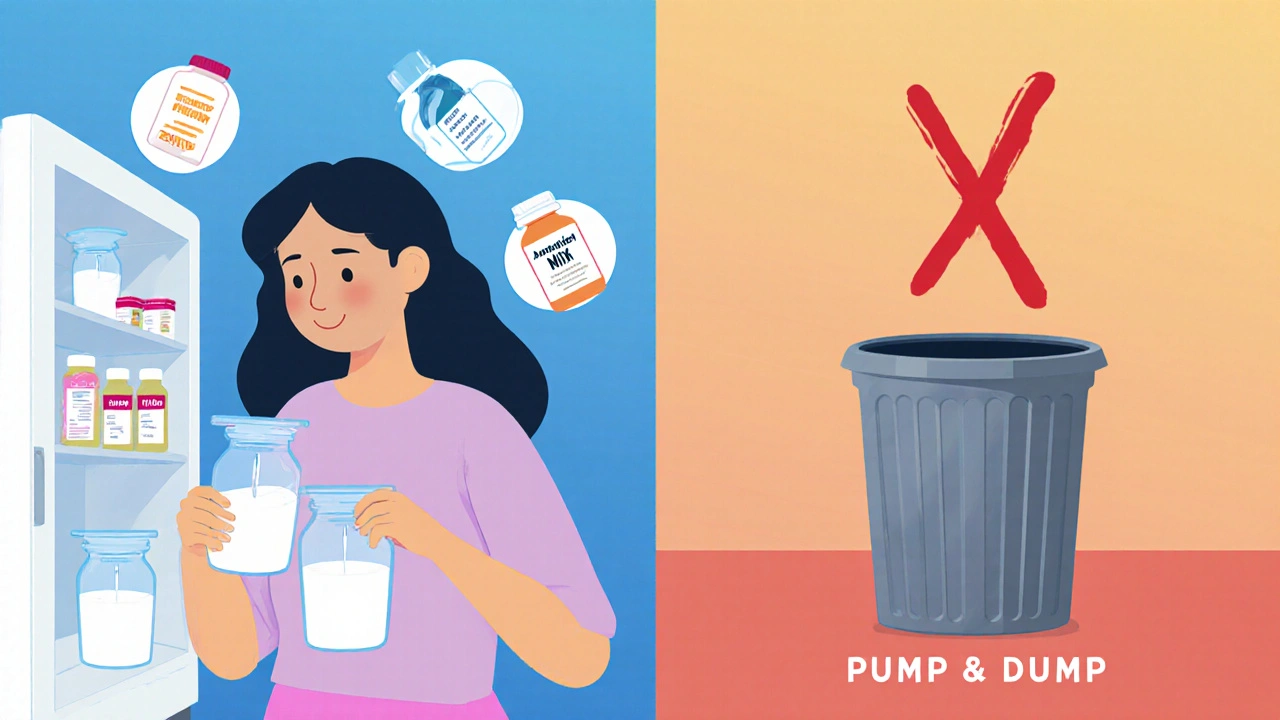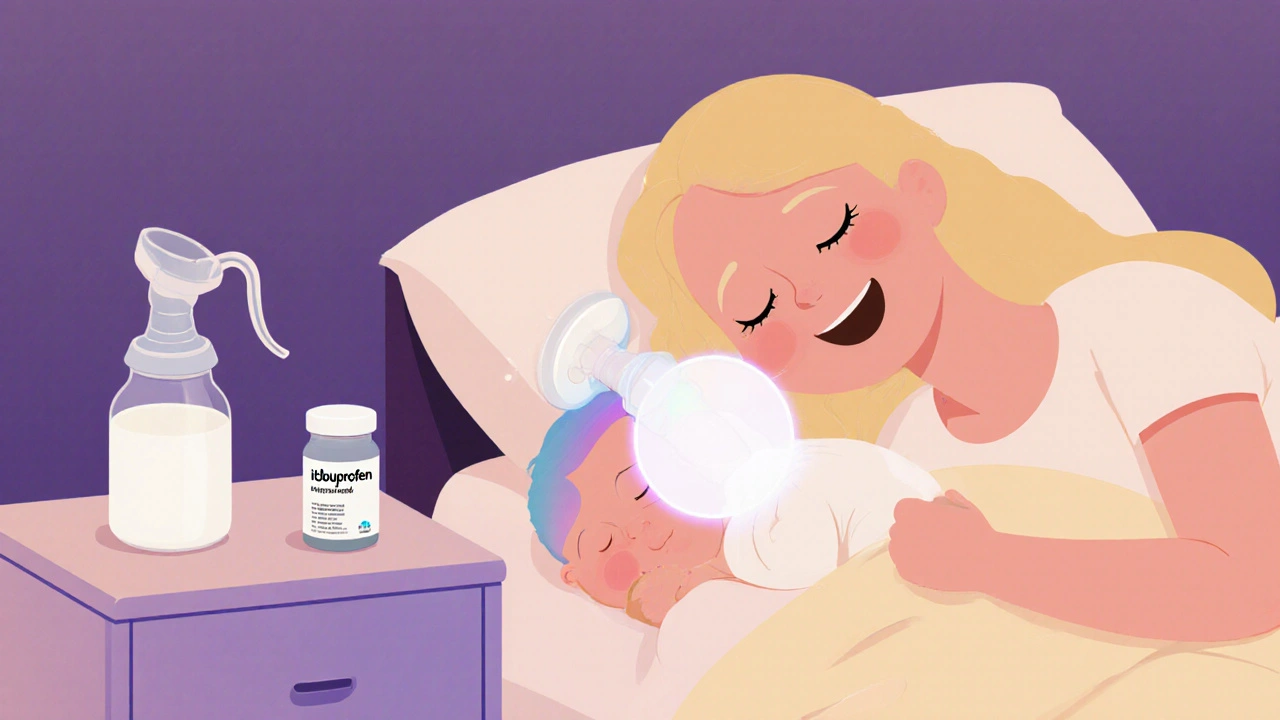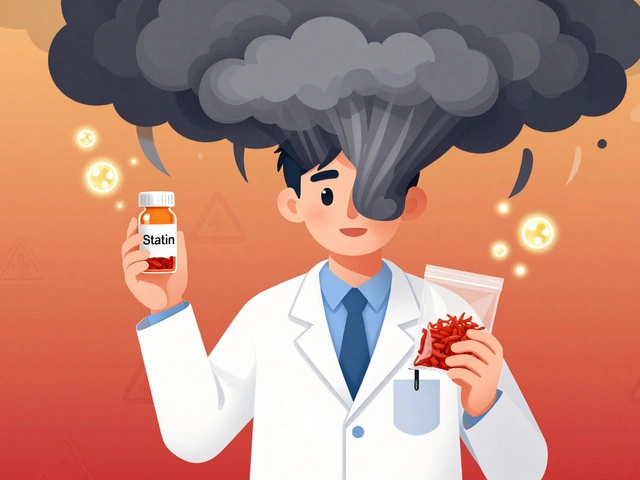When you're breastfeeding and need to take medication, the last thing you want is to panic about ruining your milk supply or harming your baby. You’ve probably heard the advice: pump and dump. But here’s the truth-most of the time, you don’t need to do it at all.
Why Pump and Dump Is Usually Unnecessary
The idea that you must throw away your breast milk every time you take a pill comes from outdated warnings on drug labels. Pharmaceutical companies often list "avoid during breastfeeding" as a legal safeguard, not because the drug is actually dangerous. The American Academy of Pediatrics, La Leche League, and the CDC all agree: fewer than 1% of medications require you to stop breastfeeding. In fact, 98% of commonly used drugs transfer into breast milk in amounts too small to affect your baby. Acetaminophen (Tylenol) and ibuprofen (Advil), for example, show up in milk at levels less than 0.1% of your dose. Your baby gets far more medication from the air they breathe or the food they eat than from your milk in most cases. Still, the myth persists. A 2021 study in the Journal of Human Lactation found that 68% of mothers were wrongly told to pump and dump. Many did-and lost their milk supply. One mother in Chicago pumped and dumped for three days after being prescribed an antibiotic. Her supply dropped by 40% and never fully recovered. That’s not just heartbreaking-it’s avoidable.When You Actually Need to Pump and Dump
There are exceptions. You should temporarily stop breastfeeding and discard milk only if you’re taking:- Radioactive isotopes (used in some imaging scans)
- Certain chemotherapy drugs
- Ergot alkaloids (like methylergonovine for postpartum bleeding)
- Some anti-cancer or immunosuppressant drugs
How Medications Move Into Breast Milk
Not all drugs behave the same way. Understanding how they transfer helps you make smarter choices. Medications that are:- Large molecules (over 500 Daltons) don’t easily pass into milk
- Highly protein-bound (over 80%) stay locked in your bloodstream
- Short half-life (less than 4 hours) clear quickly from your body
- Low lipid solubility (log P under 1) don’t dissolve well in fat, which milk contains
- Poorly absorbed by babies (less than 25% oral bioavailability) won’t hurt even if they get into milk

Best Timing for Taking Medication
Timing matters more than dumping. You can significantly reduce your baby’s exposure by taking your medication right after a feeding-especially after the longest stretch of sleep. Here’s how to do it:- Feed your baby right before you take your pill.
- Wait 6-8 hours before the next feeding. This gives your body time to clear the drug.
- If you take medication multiple times a day, space doses so your baby gets milk right before the next dose.
Storage Rules Don’t Change
Whether you’re on medication or not, breast milk storage guidelines stay the same:- Room temperature (up to 25°C): 4 hours
- Refrigerator (up to 4°C): 4 days
- Freezer (-18°C): 6 months
What to Do If You’re Unsure
If you’re prescribed a new medication and aren’t sure if it’s safe:- Don’t rely on the drug label. Those warnings are often overly cautious.
- Check LactMed. This free NIH database is updated weekly and includes detailed pharmacokinetic data, infant risk levels, and references to peer-reviewed studies.
- Call MotherToBaby or the InfantRisk Center. Both offer free, expert advice from specialists in lactation and pharmacology. MotherToBaby can be reached at 866-626-6847. The InfantRisk Center app is free and used by over 250,000 mothers.
- Ask your doctor to consult LactMed. Only 32% of obstetricians and 28% of family doctors know the safest antidepressants for breastfeeding. Give them the right tool.

Common Myths vs. Reality
| Myth | Reality |
|---|---|
| All antibiotics require pumping and dumping | Penicillins and cephalosporins (like amoxicillin, cephalexin) are among the safest. No dumping needed. |
| Depression meds will harm your baby | Sertraline has been studied in over 1,000 infants. No adverse effects found in 98.7% of cases. |
| One dose means you can’t breastfeed for 24 hours | Most drugs clear in 6-8 hours. Timing beats dumping. |
| My milk is contaminated if I’m sick | Your milk contains antibodies that protect your baby. Breastfeeding while sick helps them more than it risks them. |
| Doctors always know what’s safe | Many don’t. Use LactMed or call a specialist to be sure. |
What Happens If You Stop Breastfeeding
Stopping even briefly can hurt your supply. A 2022 study in Breastfeeding Medicine found that interrupting breastfeeding for 24 hours reduced milk production by 30-50% in 78% of mothers. And 42% never fully got it back. That’s not just inconvenient-it can mean switching to formula, increased stress, and feelings of failure. You don’t need to risk that for most medications. The goal isn’t to avoid all exposure-it’s to minimize it smartly. And that’s done through timing, not throwing away milk.Final Thoughts: You Can Keep Breastfeeding
You’re not alone if you’re scared. Millions of mothers have been misled into thinking they have to choose between their health and their baby’s. But science doesn’t support that choice. Most medications are safe. Most milk is safe. And most of the time, you don’t need to dump a single drop. Use LactMed. Call MotherToBaby. Time your doses. Store your milk like normal. And keep feeding your baby with the best food nature provides. Your body knows how to protect your child-even when you’re taking medicine.Do I need to pump and dump if I take ibuprofen or Tylenol?
No. Ibuprofen and acetaminophen (Tylenol) transfer into breast milk in extremely small amounts-less than 0.1% of your dose. These are among the safest pain relievers for breastfeeding mothers. You can take them as directed without pumping and dumping.
Is it safe to breastfeed while taking antidepressants?
Yes, many antidepressants are safe. Sertraline (Zoloft) is the most studied and recommended, with a relative infant dose of only 0.5-2.5%. Studies tracking over 1,000 infants found no adverse effects in 98.7% of cases. Avoid paroxetine if possible-it transfers more and has a higher risk profile.
What should I do if my doctor says to pump and dump?
Ask your doctor to check LactMed (lactmed.nlm.nih.gov) or call MotherToBaby at 866-626-6847. Many providers rely on outdated drug labels, not current research. You have the right to evidence-based advice. Bring the latest guidelines from the AAP or AAFP to your appointment.
Can I store milk I pumped while on medication?
Yes. Medications don’t change how long breast milk lasts. Store it the same way you normally would: up to 4 hours at room temperature, 4 days in the fridge, or 6 months in the freezer. Just label it with the medication name and date for your own tracking.
How do I know if a medication is safe for breastfeeding?
Use LactMed, the NIH’s free database, or call MotherToBaby or the InfantRisk Center. These sources give you real data-not fear-based warnings. Look for medications rated L1 or L2 (safest to probably safe). Avoid L4 and L5 unless absolutely necessary and under specialist care.
Will taking medication affect my milk supply?
Some medications, like pseudoephedrine (in cold medicines), can reduce supply. But most don’t. The bigger risk is stopping breastfeeding to pump and dump. Interrupting feedings-even for one day-can drop your supply by 30-50%. Always prioritize feeding over dumping unless you’re told otherwise by a lactation specialist.




Scott Macfadyen on 18 November 2025, AT 17:40 PM
I used to pump and dump like it was my job after every cold medicine. Turns out I was just wasting perfectly good milk and stressing myself out. This post is a godsend. I wish someone had told me this two kids ago.
Now I just time my ibuprofen after the night feed and sleep like a rock. No drama. No dumping. Just milk.
My baby’s been fine. My supply’s still solid. And I didn’t have to pay for a single ounce of formula.